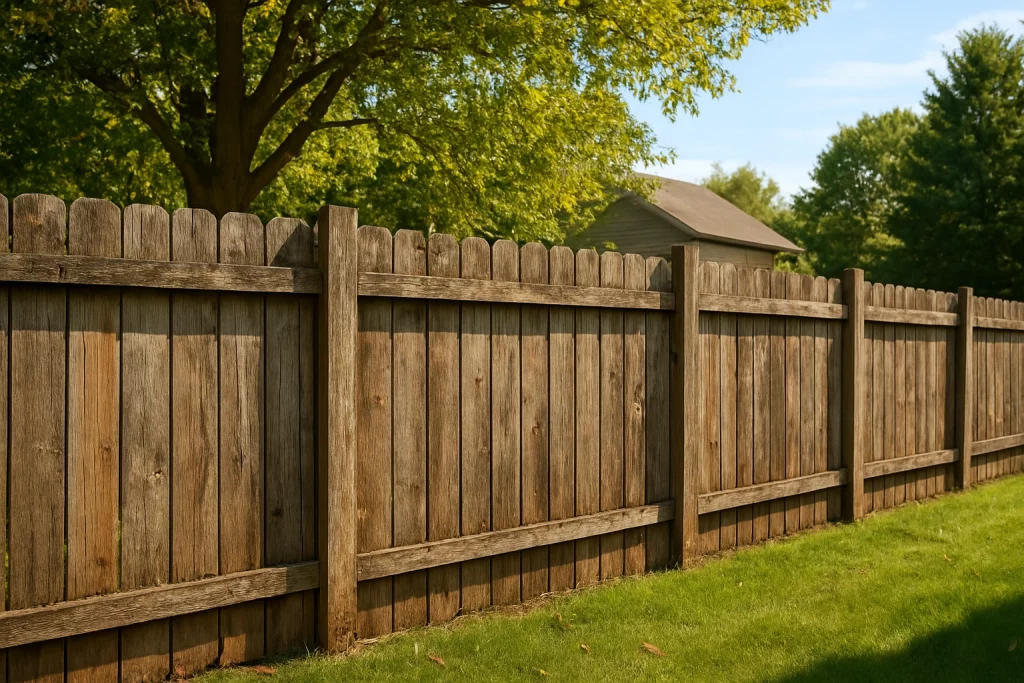Wood fences bring timeless beauty and privacy to homes, but exposure to Chicago’s harsh climate can lead to wear and tear over time. Understanding common wood fence problems helps homeowners take preventive action, extending both the lifespan and visual appeal of their fences.
Routine inspection and professional installation make a major difference, especially when working with experts familiar with local conditions and materials.
Moisture and Rot
Moisture is the primary cause of wooden fence deterioration. Snow, rain, and humidity weaken boards and joints, leading to decay.
Prevention tips:
Use pressure-treated lumber.
Apply waterproof sealants yearly.
Maintain space between the wood and ground.
Working with professionals in chicago wood fencing ensures proper installation that prevents trapped moisture and decay at the base.
Warping and Cracking
Frequent moisture absorption and drying cycles cause wood to expand and contract. Over time, this leads to warping and splitting.
How to prevent it:
Let lumber acclimate before installation.
Use galvanized fasteners.
Apply protective finishes regularly.
These steps ensure durability and preserve structural alignment, even with Chicago’s temperature fluctuations.
Leaning or Shifting Posts
Poor installation or soil erosion often causes posts to lean. This weakens the entire fence line and affects its stability.
Hiring a chicago commercial fence company chicago il ensures posts are set deep and reinforced, reducing the risk of tilting due to frost or heavy rain.
Insect Damage
Termites and other pests can destroy untreated wood from within.
Prevention measures include:
Applying pest-resistant coatings.
Keeping vegetation trimmed around the fence.
Replacing affected sections quickly.
When infestations persist, blending materials such as vinyl fence chicago il or chain link fence in chicago can create hybrid solutions that resist damage and last longer.
Sunlight and Fading
Continuous UV exposure dries wood fibers and fades natural color.
Regular re-staining maintains color depth and prevents cracking.
Quick care tips:
Use UV-resistant stains.
Reapply every two years.
Avoid finishes that attract excess heat.
Soil Contact and Ground Decay
When wood panels touch the soil directly, they absorb moisture and rot faster.
Prevention checklist:
Install metal post anchors.
Grade soil away from posts.
Leave a small gap for ventilation.
Hardware and Gate Fatigue
Hinges and screws loosen with use, especially in areas with frequent temperature changes.
To prevent wear:
Tighten hardware regularly.
Replace corroded components.
Lubricate moving parts.
Lack of Maintenance
Delaying cleaning or sealing accelerates deterioration.
Seasonal inspection and upkeep can add years to your fences life.
Understanding Wood Durability
Different wood species react uniquely to weather. Cedar and redwood resist insects and moisture, while treated pine offers cost-effective strength.
Selecting quality materials adapted to Chicago’s weather ensures resilience and longevity.
Reliable External Resource
For scientific data and professional research on wood behavior and maintenance, visit the Forest Products Society (FPS) — a leading authority in wood protection and sustainable construction practices.
Conclusion
A well-built and properly maintained wooden fence can stand strong for decades.
By learning to identify early warning signs and applying consistent maintenance, homeowners can extend fence life, preserve curb appeal, and safeguard their investment against Chicago changing seasons.

